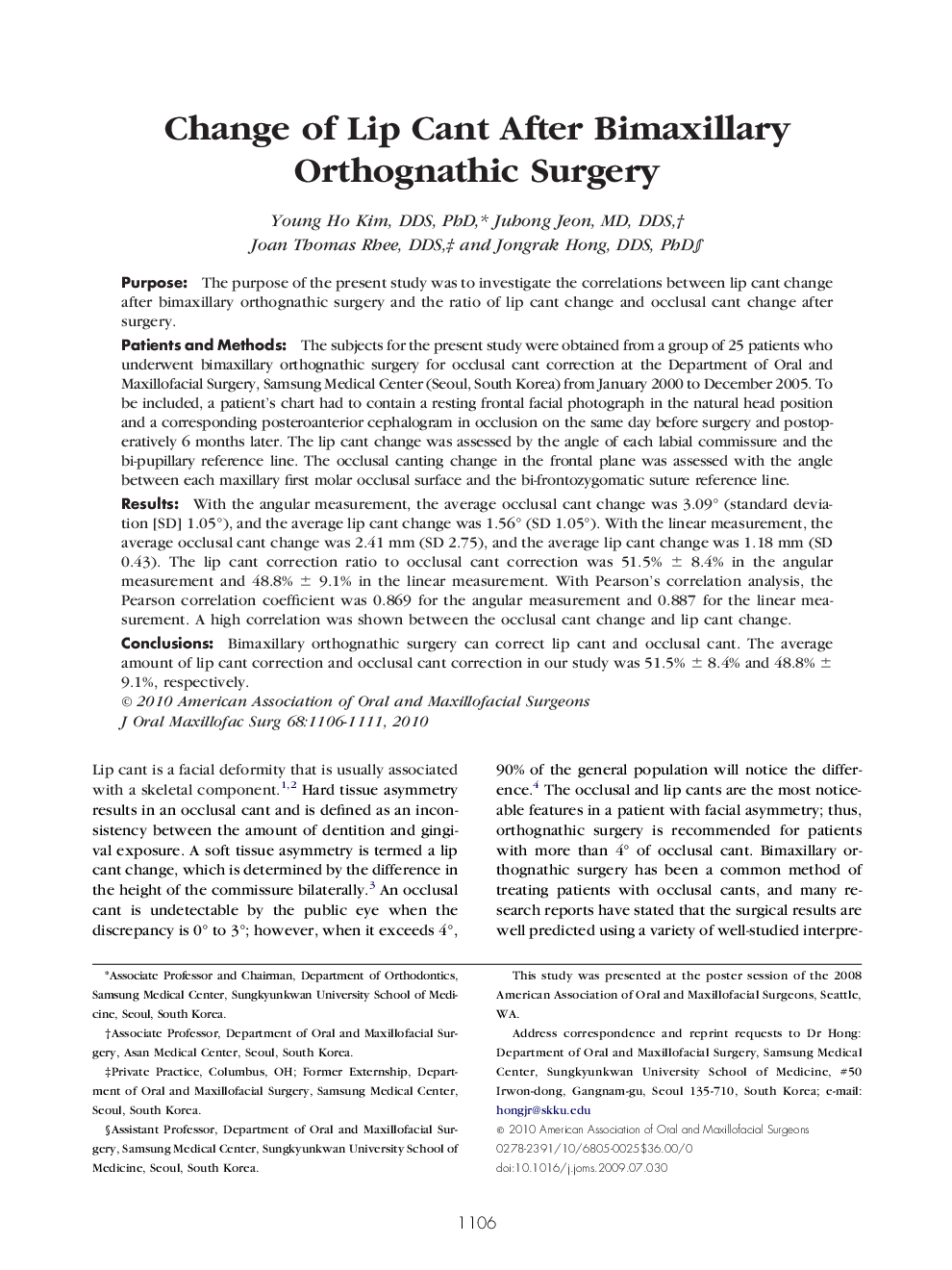| کد مقاله | کد نشریه | سال انتشار | مقاله انگلیسی | نسخه تمام متن |
|---|---|---|---|---|
| 3155013 | 1198064 | 2010 | 6 صفحه PDF | دانلود رایگان |

PurposeThe purpose of the present study was to investigate the correlations between lip cant change after bimaxillary orthognathic surgery and the ratio of lip cant change and occlusal cant change after surgery.Patients and MethodsThe subjects for the present study were obtained from a group of 25 patients who underwent bimaxillary orthognathic surgery for occlusal cant correction at the Department of Oral and Maxillofacial Surgery, Samsung Medical Center (Seoul, South Korea) from January 2000 to December 2005. To be included, a patient's chart had to contain a resting frontal facial photograph in the natural head position and a corresponding posteroanterior cephalogram in occlusion on the same day before surgery and postoperatively 6 months later. The lip cant change was assessed by the angle of each labial commissure and the bi-pupillary reference line. The occlusal canting change in the frontal plane was assessed with the angle between each maxillary first molar occlusal surface and the bi-frontozygomatic suture reference line.ResultsWith the angular measurement, the average occlusal cant change was 3.09° (standard deviation [SD] 1.05°), and the average lip cant change was 1.56° (SD 1.05°). With the linear measurement, the average occlusal cant change was 2.41 mm (SD 2.75), and the average lip cant change was 1.18 mm (SD 0.43). The lip cant correction ratio to occlusal cant correction was 51.5% ± 8.4% in the angular measurement and 48.8% ± 9.1% in the linear measurement. With Pearson's correlation analysis, the Pearson correlation coefficient was 0.869 for the angular measurement and 0.887 for the linear measurement. A high correlation was shown between the occlusal cant change and lip cant change.ConclusionsBimaxillary orthognathic surgery can correct lip cant and occlusal cant. The average amount of lip cant correction and occlusal cant correction in our study was 51.5% ± 8.4% and 48.8% ± 9.1%, respectively.
Journal: Journal of Oral and Maxillofacial Surgery - Volume 68, Issue 5, May 2010, Pages 1106–1111